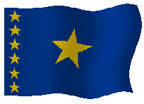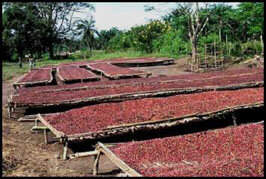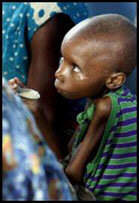 FIGURES FIGURES |

Président: Général Major Joseph Kabila (January 2001)
Government: Democratic.
Administrative divisions: 10 provinces ; Bandundu, Bas-Congo, Equateur, Kasai-Occidental, Kasai-Oriental, Katanga, Kinshasa, Maniema, Nord-Kivu, Orientale, Sud-Kivu.
Area: 2.344.885 square kilometers
Population (2001 est.): 53,624,718
Capital and largest city (2000 est.): Kinshasa, 6,050,000 (metro. area)
Other large cities: Lubumbashi, 851,381; Mbuji-Mayi, 806,475; Kisangani, 417,517; Kolwezi, 417,810
Monetary unit: Congolese Franc (CF)
Languages: Al though 700 local languages and dialects are spoken, the linguistic variety is bridged both by the use of French and the intermediary languages Kikongo, Tshiluba, Swahili, and Lingala.
Ethnicity/race: over 250 African ethnic groups, the majority are Bantu; the four largest tribes-Mongo, Luba, Kongo (all Bantu), and the Mangbetu-Azande (Hamitic)-make up about 45% of the population
Religions: Roman Catholic 50%, Protestant 20%, Kimbanguist 10%, Muslim 10%; syncretic and traditional, 10%
Economic summary: GDP/PPP (2000): $US 4.6 billion; per capita US$85.
External debt: (2000) $US13 billion
Average CPI Inflation: (2000 est.) 554%.
Real GDP growth: -5,6 (1997); -1,6 (1998); -10,4 (1999 est.); -4,3 (2000 est.)

Unemployment: n.a. Arable land: 3%.
Agriculture: coffee, sugar, palm oil, rubber, tea, quinine, cassava (tapioca), palm oil, bananas, root crops, corn, fruits; wood products.
Labor force: n.a.
Industries: mining, mineral processing, consumer products (including textiles, cigarettes, processed foods and beverages), cement, diamonds.
Natural resources: cobalt, copper, cadmium, petroleum, industrial and gem diamonds, gold, silver, zinc, manganese, tin, germanium, uranium, radium, bauxite, iron ore, coal, hydropower, timber.
| Exports: $824 million (2000 est.): diamonds, copper, cobalt, crude oil.
Imports: $1224 million (2000 est.): foodstuffs, mining and other machinery, transport equipment, fuels.
Major trading partners: Benelux, U.S., South Africa, Finland, Nigeria, Kenya, China.
 Communications: Communications:
Telephones: main lines in use: 36,000 (2000); mobile cellular: 55,000 (2000).
Radio broadcast stations: AM 3, FM 12, shortwave 1 (1999). Radios: 18.03 million (1999).
Television broadcast stations: 20 (1999). Televisions: 6.478 million (1997).
Internet Service Providers (ISPs): 3 (2001). Afrinet, Interconnect, Raga
. Transportation: Transportation:
Waterways: 15,000 km including the Congo, its tributaries, and unconnected lakes.
Ports and harbors: Matadi, Banana, Boma, Bukavu, Bumba, Goma, Kalemie, Kindu, Kinshasa, Kisangani, Mbandaka.
Airports: Kinshasa/N'djili - Lubumbashi/Luano - Goma -Kisangani/Bangoka - Gbadolite
 International disputes: International disputes:
the Democratic Republic of the Congo is in the grip of a civil war that has drawn in military forces from neighboring states, with Uganda and Rwanda supporting the rebel movement which occupies much of the eastern portion of the state; most of the Congo river boundary with the Republic of the Congo is indefinite (no agreement has been reached on the division of the river or its islands, except in the Pool Malebo/Stanley Pool area).

 Health and Welfare: Health and Welfare:
There is a huge variety of infectious and parasitic diseases including malaria, trypanosomiasis (sleeping sickness), onchocerciasis (river blindness), and schistosomiasis a major health threat. Diseases as measles, diarrheal diseases, tetanus, diphtheria, pertussis, poliomyelitis, tuberculosis, and leprosy are also prevalent. The majority of the population is also infected with intestinal worms. Acquired immune deficiency syndrome (AIDS) and other sexually transmitted diseases are spreading rapidly.
 Humanitarian Situation: Humanitarian Situation:
Today, after 3 years of war, we count over 3 million deaths in DRC, 2 million people displaced, 16 million that need critical alimentary assistance and 2 million have AIDS (twice as much as compared to 1999). Approximately 37% of the population does not have acess to basic medical cares and less than 47% can only acess purified drinking water. |

